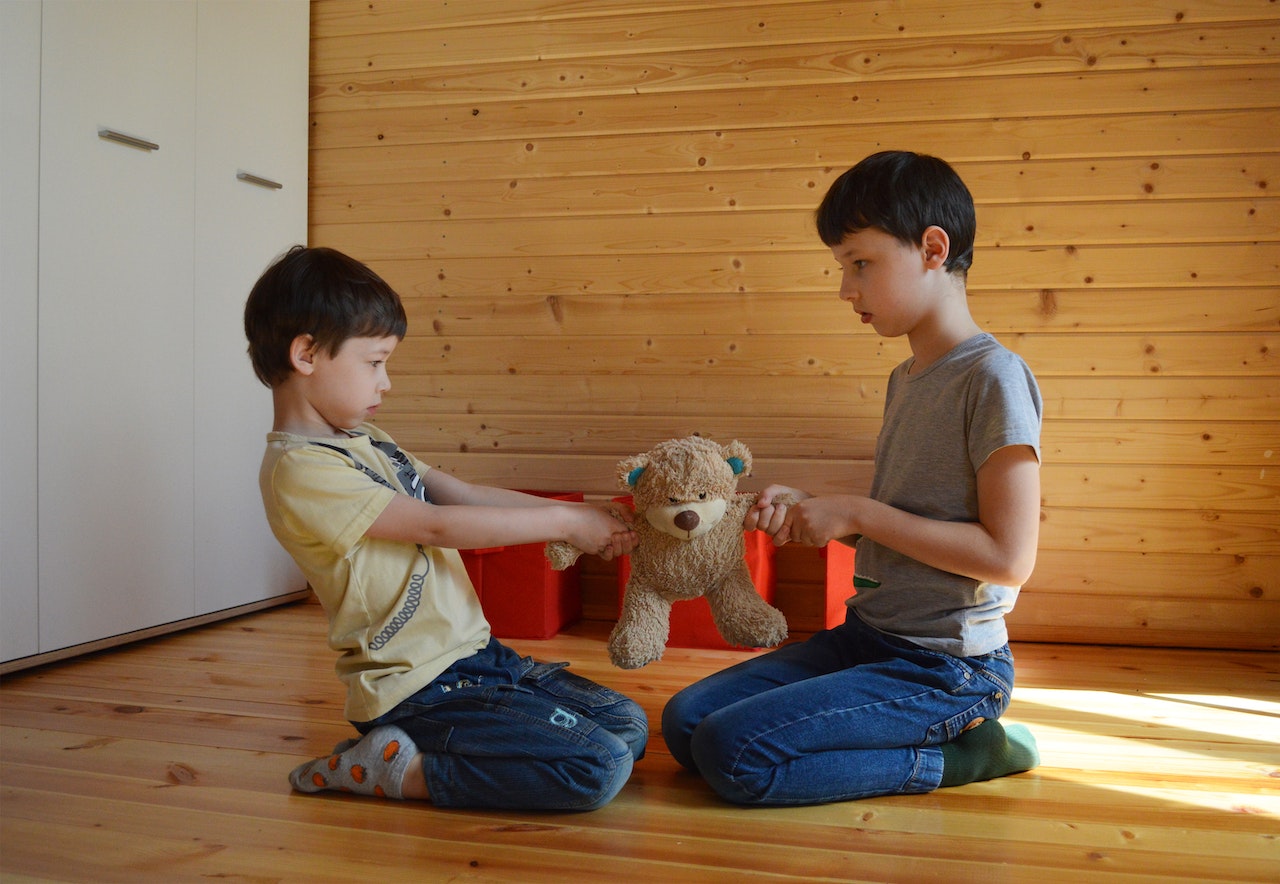The joys of parenting. One moment, you’re proudly watching your little cherub take their first steps, and the next, you’re grappling with the existential crisis of learning they’ve been pushed around in the school playground. If only the whole parenting thing came with a manual. (Oh, wait, there are thousands, and none agree on anything. Thanks, Dr. Spock.)
Step 1: Play Detective, Not Avenger
So, your child’s been bullied? Let’s not storm the school gates just yet. We’d all love to be superheroes for our kids, but showing up in a cape and mask might be a tad bit too much.
Begin by calmly (yes, I know it’s hard) talking to your child. Understand the who, what, when, where, and why. Remember, your role here is that of Detective Parent, not Judge, Jury, and Executioner Parent. Take deep breaths. You got this.
Step 2: The Power of Empathy
Instead of focusing on how much you want to wring the little bully’s neck (we’ve all been there), spend time with your child, offering comfort, understanding, and a listening ear. You remember empathy, right? It’s that thing you feel when your friend spends 10 minutes talking about their latest diet and you pretend to care.
Jokes aside, your child needs to know they’re not alone in this, and you’re there for them every step of the way.
Step 3: Teachers Aren’t Just for Homework
Remember those lovely folks who spend more time with your child during the weekdays than you do? Yep, teachers. They aren’t just there to teach algebra and the intricacies of Shakespearean sonnets. They can be valuable allies when dealing with bullying.
Instead of barging in and demanding a school assembly in your child’s honor, approach teachers with an open heart and mind. They might be just as concerned as you are and may offer insights or solutions you hadn’t considered.
Step 4: Teaching The Art of ‘Stoic Face’
While you work on the bigger picture, equip your child with the ancient art of ‘Stoic Face.’ It’s like ‘Poker Face’ but way cooler. Teach your child the power of not showing a reaction. Bullies often thrive on reactions. So, the less your child gives, the better. And hey, it’s also a fantastic skill for when they become adults and have to sit through mind-numbingly boring meetings.
Step 5: The Buddy System
Remember when you had to go to the bathroom in pairs during elementary school? There was a reason for that (other than the teacher’s probable desire for peace and quiet). There’s safety in numbers. Encourage your child to stick close to friends during vulnerable times like recess or bus rides.
Step 6: Self-Defense, Not Offense
Okay, don’t get too excited here. I’m not suggesting you enroll your little one in the “Ultimate Cage Fighting for Toddlers.” Instead, look for a local martial arts class that focuses on discipline, self-respect, and control. It’s about empowerment and building confidence, not creating the next schoolyard vigilante. Plus, your child will get to wear a super cool belt that’s not just a fashion statement.
Step 7: Communication is Key. No, Seriously.
Make sure you’re checking in regularly with your kiddo. And I don’t mean the generic “How was your day?” followed by the inevitable “Fine.” Dive deeper. You might need to channel your inner Oprah for this. Find out how they’re feeling, what’s happening in their day-to-day life, and if the situations are improving or deteriorating. And yes, it might involve enduring tales of cafeteria food and the latest playground drama. But hey, you signed up for this when you became a parent, remember?
Step 8: Document Like a Pro
If the bullying persists, start jotting down incidents. Date, time, location, involved parties, and descriptions. It might seem like you’re preparing for the next big court drama on TV, but it’s crucial. Should you need to escalate the situation, having a well-documented history can be invaluable. Plus, who knows, you might discover your latent talent as a budding crime novelist.
Step 9: Teach Them About Digital Dragons
If the bullying is cyber in nature, it’s like dealing with digital dragons. Ensure your child knows not to engage with online bullies and to always come to you if someone’s bothering them online. Teach them the power of the ‘block’ button. It’s like giving them a magic wand to make the trolls disappear. Also, maybe it’s time to monitor their online interactions a tad closer. Sorry kids, Mom’s new title is “Digital Overlord.”
Step 10: Resilience is the New Cool
Remember, it’s not just about dealing with the bullies, but also about equipping your child to navigate the stormy seas of life. Teach them the power of resilience, self-worth, and self-love. They’re not buzzwords. They’re life skills. And while you’re at it, maybe learn a thing or two about it yourself.
In conclusion, parenting through bullying is like trying to assemble IKEA furniture without the manual — confusing, frustrating, and often tear-inducing. But with patience, love, and maybe a little humor (for sanity’s sake), you’ll get through it. And hey, if all else fails, there’s always the Parent Protection Program. (Okay, I made that last part up. But wouldn’t it be cool?) Stay strong, Parental Warriors! Your kiddo’s got the best ally in their corner: You.
Pro Tips for Parental Warriors Navigating the Bullying Battlefield
- The Power of Storytelling: Share personal stories of resilience, preferably your own or those of historical or family figures. Sometimes knowing someone else has been through it and came out stronger is immensely comforting.
- Avoid the Revenge Trap: While it might be tempting to tell your child to “fight back” or “give the bully a taste of their own medicine,” this can escalate the situation. Focus on non-confrontational strategies.
- Be Their Safe Haven: Make sure home is a safe and comforting space for your child. It should be their sanctuary from the outside world.
- Engage in Activities: Enroll them in clubs or activities that boost self-esteem and surround them with positive peers. From arts to sports, find their niche!
- Educate About Diversity: Sometimes, bullies target what they don’t understand. Encourage open dialogue about differences and teach your child the value of diversity.
- Therapy Isn’t a Dirty Word: If bullying is taking a significant toll on your child’s mental health, consider professional counseling. They might benefit from talking to someone neutral.
- Network with Other Parents: Sometimes, knowledge is power. Connect with other parents, share stories, and gather advice. You might learn new coping strategies or find allies in your anti-bullying campaign.
- Digital Detox: If cyberbullying is the concern, encourage regular breaks from social media and online spaces. It can help to disconnect and recharge.
- Celebrate Small Wins: Every day your child stands tall, applaud their strength. Positive reinforcement can go a long way.
- Stay Updated on School Policies: Ensure you’re up-to-date with your child’s school’s anti-bullying policy. If they don’t have one, it might be time to speak up!
Remember, every child and situation is unique, so while these pro tips are a great starting point, always trust your parental instincts. You’ve got the world’s toughest job, but luckily, you’re pretty darn awesome at it.
Frequently Asked Questions (FAQs) About Bullying & Your Child
Bullying is a repeated aggressive behavior that is intentional and involves an imbalance of power or strength. It can take many forms, such as physical, verbal, relational, or cyberbullying.
While many people may regard some forms of bullying as rites of passage or just “kids being kids,” the effects can be profoundly damaging, both emotionally and psychologically. It’s essential to treat bullying seriously.
Typical conflicts involve a disagreement or misunderstanding and can be a two-sided affair. Bullying, on the other hand, involves repeated harmful actions towards someone who has a hard time defending themselves.
Create a safe environment at home where your child feels comfortable sharing their feelings. Let them know you’re there to listen without judgment, and you’re on their side.
Firstly, document every incident and communication you have with the school. If there’s no resolution, consider escalating it to the school district or school board. Remember, it’s your right to ensure your child’s safety.
It’s a tough pill to swallow, but important to address. Engage in an open conversation with your child to understand the root of their behavior. Professional counseling or behavioral therapy might be beneficial.
Yes. Prolonged exposure to bullying can lead to anxiety, depression, low self-esteem, and in severe cases, self-harming behaviors. It’s crucial to address bullying early and offer support to the victim.
Encourage them to be assertive, not aggressive. Role-play scenarios at home, teach them to use their words, and inform a trusted adult about any bullying incidents.
Changes in behavior, unexplained injuries, lost or destroyed personal items, frequent headaches or stomach aches, changes in eating and sleeping habits, declining grades, or avoiding school/social situations can all be signs.
Cyberbullying is increasingly common. Monitor your child’s online activities, educate them about safe online behaviors, and encourage them to come to you if they encounter any online harassment.



